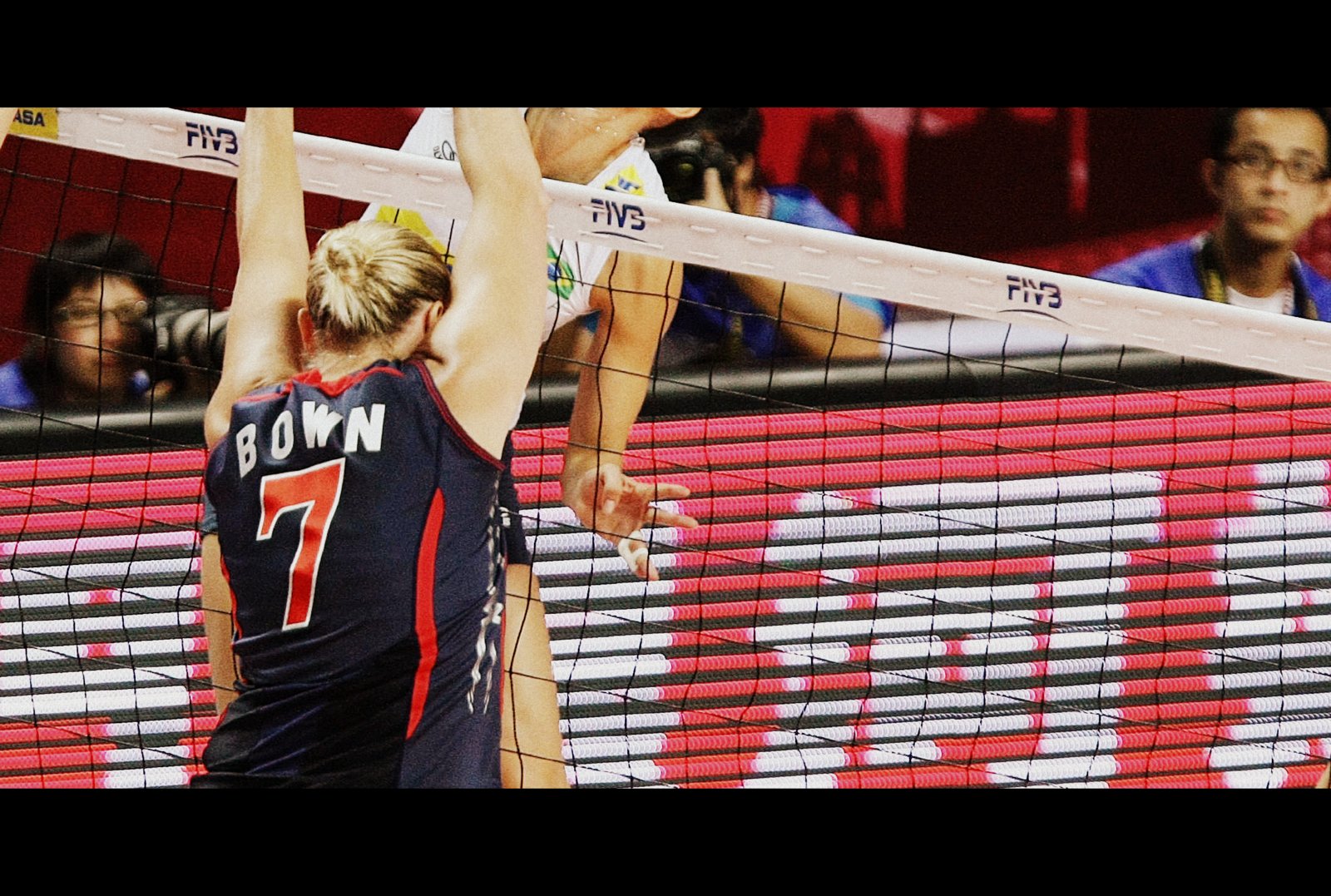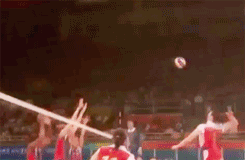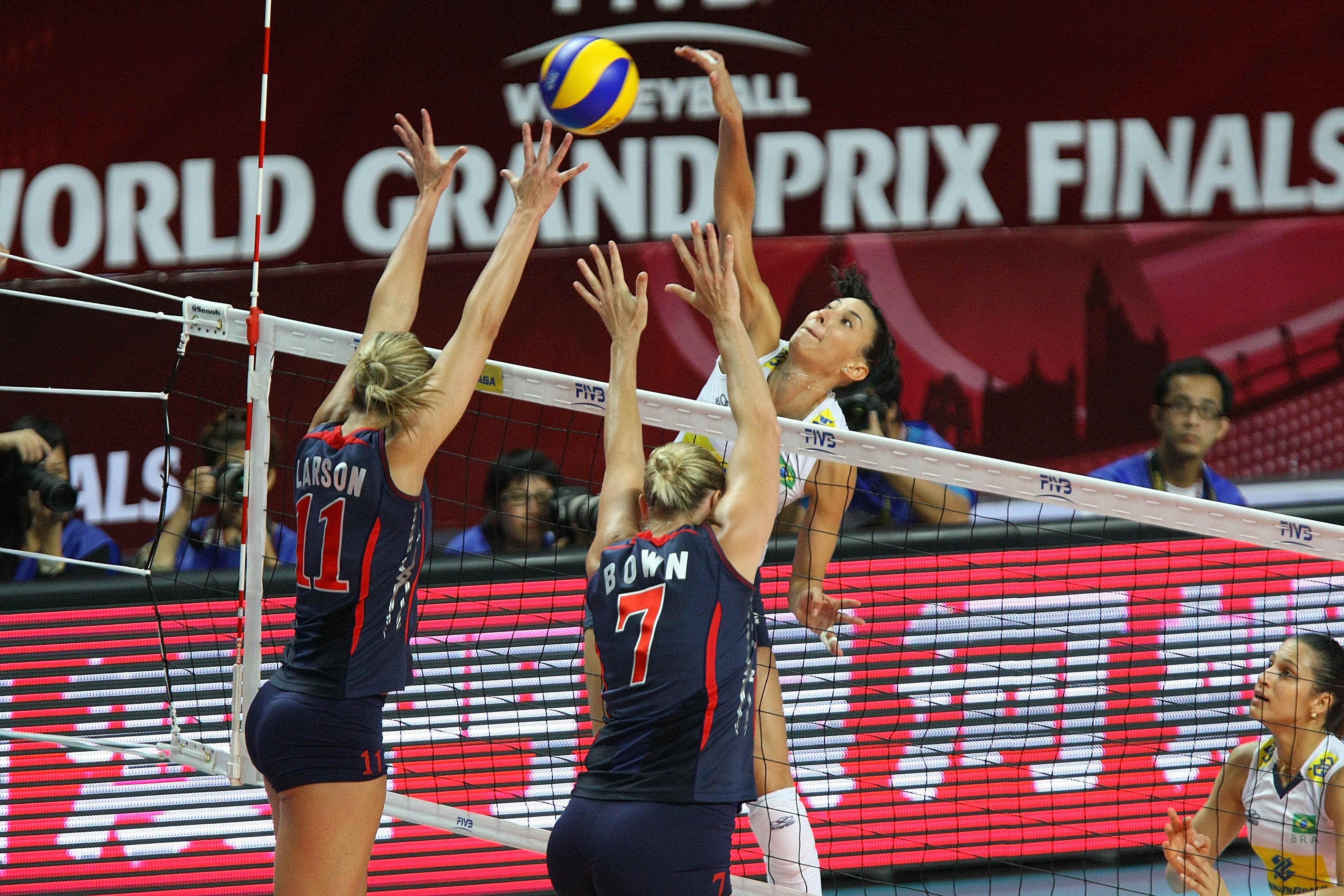Middle Blockers! These tips are for you!
Three-time Olympian Heather Bown shares the knowledge that has made her one of the top middle blockers in the world over the past decade
Here at VolleyballUSA, we’re all about tapping the knowledge of the very best players and coaches in the country and providing you with high-quality instructional information. Where middle blocking is concerned, who better to ask than Heather Bown (Yorba Linda, Calif.)? She began her international volleyball career in 2000 and became an instant starter. And she has held that starting position for more than a decade, through three Olympics and during the U.S. Women’s National Team’s most recent triumph, the gold medal at this year’s FIVB World Grand Prix [2010].
Her expertise has been plenty valuable to rookie USA middle blocker Foluke Akinradewo (Plantation, Fla.), who started alongside Bown this summer. In practices and matches, Bown fueled the former Stanford All-American with trade secrets – and the results were impressive. Akinradewo, who just became a full-time member of the national team last December, was chosen MVP of the World Grand Prix.
“It’s always good to have experience and youth working together,” U.S. Women’s National Team Head Coach Hugh McCutcheon says. “Heather has been really good at working with the other middles and lending her experience to help them develop.”
Here are Heather’s tips on how you can become a better middle blocker:
1. The first thing a middle blocker needs to do is get in a good ready position – knees bent, equally balanced on both feet. Known also as being loaded and ready to move. Inexperienced middles sometimes stand up too straight. By staying in a lower, more athletic position you’ll be able to move more explosively.
2. Stand about a foot and a half to two feet from the net. To determine the exact distance, put your elbows bent at your side (as if holding a tray) and reach straight out with your hands until your fingers touch the net. You can fine tune this as you see what works best during drills and matches. If you feel too close to the net, it will make it difficult to penetrate of the net into the hitter’s window, and you’ll also be at greater risk of netting. If you’re too far from the net, it leaves a big gap between you and the net, which presents two problems: 1. It’s more likely that a ball will fall on your side of the net when attempting to block; 2. It makes it harder to penetrate over the net. Remember, the farther you can press over the net, the more court area you are taking away, and that makes it tougher for the hitter to get the ball past your team for a kill.
3. In juniors, it may not be as common to scout the other team as much as we do at the international level. But it’s still important for middle blockers to make some mental notes to help organize their team’s blocking for each rotation. Here are three key questions to ask yourself:
– Is the setter in the front row or back row? (If she’s in the front row, is she an active attacker?)
– Who are the hitters in the front row?
– Who’s the go-to hitter in whatever rotation the other team is in? (The opponent may have a stellar player who gets most of the sets in a certain rotation or at important moments in a match – after 20 points, for instance. Or when the team is in trouble or behind. You need to know who that is so you’re ready.)
4. Watch the pass. The location of the ball after the pass tells you a lot about how the play is likely to unfold. For instance, if the pass is tight and the opponent’s setter is in the front row, you have to watch for a setter dump. If the pass is off the net, you can be almost certain that the setter isn’t going to run the middle. Also, be prepared for an overpass. If the ball is over but within a few feet of the net, go ahead and hit it. If it’s farther than a few feet off, it’s probably better to pass it. On really tight balls – when the setter is in the front row – be patient. If you interfere with the setter, the ref will call it.
5. Once you’re in the ready position, loaded and ready to move, here’s the traditional footwork that middle blockers use to go laterally in either direction:
Big first step with the lead leg in the direction of the set, a crossover step and then a hop close. (That big first step should be a driving step, where you push off one foot, glide in the air and land on the other foot. It’s similar to a bounding step, only it’s sideways as opposed to forward. That explosive step helps you be more dynamic and cover more ground.) The sister blocking technique to the traditional blocking footwork for the women’s game is what’s called “swing blocking.” You may see this used more by boys than girls. The ready position is exactly the same for both styles of blocking. The major difference is this: With the swing-blocking technique, your first step is a small directional step followed by a larger dynamic step to a close step. All of this is done while turning adjacent to the net. It’s easiest explained as a turn and run and close.
Remind yourself not to stand straight up when taking these steps. If you’re too upright, you limit the driving power you have in your legs. Staying in a half-squat position (known also as a good, loaded position) allows you to move more quickly and be more efficient when going from the middle of the court to the pin.
6. Once you’ve closed to your outside blocker, keep this in mind: Reach high above the net isn’t as important as getting over the net. I’ve played with 5-6 setters who have had success blocking much taller hitters because they get over the net. When the majority of hitters go for a terminating kill, they’re usually hitting the ball just a few inches over the tape, so there’s a good chance you’ll have succss if you push over the net into that area.
7. Your end goal is to create a wall with your hands on the other side of the net. In one fluid motion, jump and extend your arms as straight as possible over the net and lock your shoulders. You can feel this sensation if you just sit and shrug one shoulder up. Try pushing your shoulder down with the opposite hand when relaxed. Now try it when it’s shrugged up. Feel the difference? You want that strong “locked shrug” sensation when you block. The space between your thumbs and pointing fingers should be in line with your shoulders, with your hands tilted at about a 45-degree angle from your wrist. Your hands should be strong and firm but not uncomfortably rigid. When the ball is hit, never slap at it. Remember, you have created a wall. Walls are solid and still, and they don’t slap.
8. Communicate with your back-row players. The more dialogue you can share with the people behind you, the better prepared you’ll be to block a ball. They can see what’s going on at the net better than you can, so ask them for feedback. You may be a blocker, but they are part of the defense as well. Work as a team. Your confidence as well as theirs will improve from the simple act of communication. At the more advanced levels, you might even remind each other about a hitter’s tendencies. For instance, the middle blocker may let the back-row players know that she’s going to take away the attacker’s strongest shot so they should cover the weaker shot.
9. The more advanced you are, the more you may want to block with independent hands. By this, I mean that your hands don’t have to move together. You can have one hand taking the seam shot away while the other drops into the angle shot. Most hitters expect a middle to go straight up and over, but sometimes it’s a good idea to drop that inside hand so you can take the cross-court hit away. To practice this, get a coach or teammate to stand on a box and hit balls cross-court. Drop your inside hand about 30-degrees, far enough so it’s in the angle but not so far that it’s outside of your reach. You still want to be able to have a strong shoulder. Work on reaching out and being strong and firm with one hand cutting off the cross-court shot.
10. When you “house” an opposing hitter, be respectful. Don’t be obnoxious. There’s nothing wrong with celebrating, but make a habit of not screaming in the opposing player’s face. A better way to enjoy the moment is to give acknowledgment to your outside blocker for doing a great job setting up the block location, then turn and direct your high-volume energy toward your teammates. That allows you to show emotion, and it helps fire up your team. What it doesn’t do is give the opponent extra motivation.
A tree-time Olympian, author Heather Bown has been a member of the U.S. Women’s National Team since 2000.
Originally published in VolleyballUSA, Fall 2010 issue. To subscribe, visit this page for more information.
(image: FIVB)



